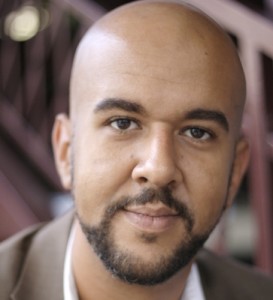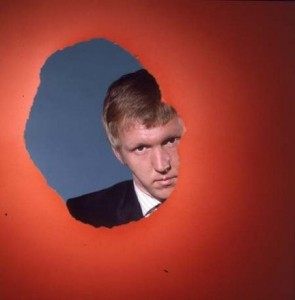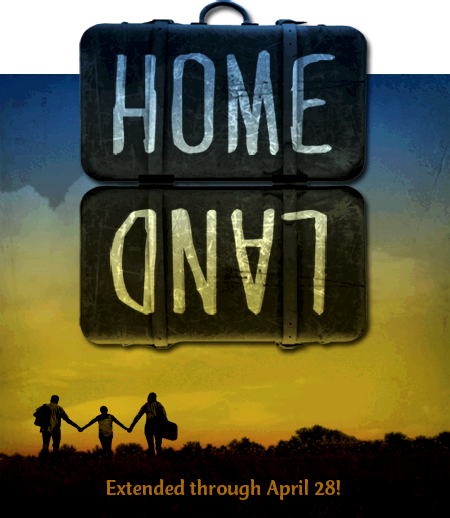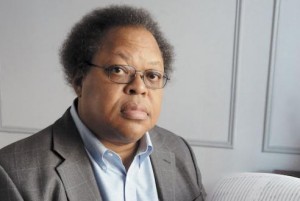Old Man and the C: Star Power (Part 1)
This week marks the beginning of an arduous and vitally important process: The Rating of the iTunes Library. You might think that as a music reviewer/writer this may be a relatively simple process, but you would be very wrong. I’ve always found the star rating system reductive, minimizing hundreds or thousands of hours of artistic sweat down to a cartoonish, linear constellation. On the other hand, every time I return to the 16,382 tracks currently engorging my hard drive (I reduced the collection by 60-some-odd-percent recently), the experience feels a bit like setting foot in the Smithsonian for the first time. Where do I even start?
So against artistic instinct, King Diamond, John Fahey and William Primrose are all now sporting the equivalent of stickers on a kindergarten “Good Behavior” chart.
What does 4/5 stars mean, you ask? I’ve decided to use the Netflix model (loosely) as a launch point. Here’s my version:
1 star: Causes compulsion to lance eardrums with rusty, Civil War-era bayonets
2 stars: Inspires constant eye-rolling and as such, dangerous while operating a motor vehicle
3 stars: Goooood
4 stars: I don your band’s t-shirt
5 stars: Face. Melted.
Next week on Old Man and the C: Decision Time
The Old Man and the C: La alegría en la música
Spektral has been deep in the sweaty task of excavating Gb Maj (among others) in Ravel’s sumptuous and stupefying quartet, and admittedly it has not been without its frustrations. For instance, finding that perfect fingering for the alto melody near the top of the 3rd movement, with its hurdles of sourdine, register and string crossings may or may not have resulted in the extemporaneous utterance: “Hang cur, hang, you whoreson, insolent noisemaker!” Wait no, that was Shakespeare.
In any case, the outrageously talented teens of the Albany Park Theatre Project inadvertently offered me a respite this weekend with Home/Land. First things first, it is one of the best pieces I’ve seen on stage and it’s been extended through April 28th, so you need to buy those tickets pronto (all previous shows have sold out). Devised by the actors and their APTP mentors from interviews with undocumented immigrants in Chicago, Home/Land weaves the real-life and often harrowing narratives of families broken apart, by among other factors, deportation. I’ll go ahead and admit that both myself and my three companions were doing the head-tilted-slightly-back-
Seriously, go see this show.
So how does this relate to Ravel? At the end of the play, with the audience at this point stunned silent and emotionally exhausted, the characters produce instruments from the many suitcases of which the stage is comprised. Some stomp-dance a beat as a viola and violin take up the melody. Then a trombone and french horn appear downstage. The entire cast [more ethnically diverse than any play you’ve ever seen, by the way] is jubilant, the music ricocheting off the angled, attic-level Laura Wiley Theater ceiling as faces begin to light up around the space. In that moment, music is not about tuning gnarly sevenths or matching tremolo strokes.
It’s about joy. Just joy.
The Old Man and the C: Sheiks Not of the "Iron" Variety
For this week's Old Man and the C, I would like to congratulate the Northwestern University cast and crew for a spirited production of Spring Awakening. Having only recently developed a fondness for musical theatre, I'll leave the reviews to those more qualified, but the high level of singing and staging for last Sunday's final performance was nothing short of remarkable. Keeping audience focus (mine, at least) off songwriter/composer Duncan Sheik's poetically pedestrian lyrics ("Still your heart says/The shadows bring the starlight/And everything you've ever been is still there in the dark night")
is a feat unto itself, and the demanding falsetto on display by tenors Max Cove (Moritz) and Alex Nee (Melchior) was impressively executed.
Also, there is a zesty number entitled, "Totally Fucked."
I may not be as drawn to Sheik's rock-ish score as most, and I did have to sit, mentally squirming, beside a septuagenarian as undergrads graphically simulated coitus, but the timeliness of a show about repression is undeniable. Most importantly, the excellent acting by the NU cast left me curious as to the play of the same title penned by German playwright Frank Wedekind from which the musical is derived. So thank you, Northwestern musical theatre department, for a memorable Sunday...and inspiring yet another trek to the Book Cellar.
The Old Man and the C: Come Get Psalm
There is so much more to an album than what fits in a 250-word review. In the case of Philip Blackburn's Ghostly Psalms, this is particularly distressing because of the immensity of the project and the sound universe within. The director of the excellent recording label Innova describes his inspiration for the titular work as follows:
"Ghostly Psalms sprang from the recurring anxiety dreams of an ex-chorister. But not the usual ones of being left behind on tour, singing a spectacular false entry, or holding the music upside down in front of a paying audience. This memorable one, from 1982, was about crawling uphill through a rocky desert with a crystalline trickle of clear water flowing uphill, entering a fortified mediaeval village (like Conques, perhaps) on the hilltop through a culvert, and walking into the abbey while voices played all around. The ceremony highlighted several ways of parsing the universe and making sense of how it all worked: through pure harmonic number ratios, dynamic ecosystems, vibration, brain activity, memory, order, and chaos: organic, mechanical, mystical."
This reminds me, tangentially, of the nightmarish sequences in Tarsem Singh's terrifying 2000 film, "The Cell". While Blackburn's writing is less likely to keep me checking and re-checking the front door locks at 2am, the music here is no less expansive in scope.
My favorite track on the album, truth be told, is Duluth Harbor Serenade (2011). I grew up spending summers on Lake Superior in Bayfield, WI, and the sounds of nearby Duluth recorded here are intimately familiar. Driving north toward Bayfield, you'll pass through Superior, where the steel is rusty and the ships are a constant fixture. Take a listen, and get lost in a symphony of lift bridges and chain saws. Not THOSE chain saws.
Ka-li-ma! Ka-li-ma!
I may or may not have recently cursed the name of Marcos Balter in an elaborate and fiery pagan ritual.
You see, he's written these parallel minor sixths that leap up and down the fingerboard in his newly-revised final movement of Chambers.
Commissioned by Spektral, we featured an early draft of this piece on our final concert of last season, and Marcos has been re-working it since. Witnessing this progression of the score is one of the felicities of being a new music player. Concepts transition from interesting idea to captivating sonic endeavor. Corners are navigated more effortlessly and redundancies are trimmed.
 Back to the aforementioned pyre, there is another transition that takes place in this process: that of technical frustrations dissolving. What seems improbable slowly comes into focus as solutions to particularly gnarly passagework emerge. Those dense sixths are still a bear, but as we rehearse, their potency (and deliberateness on the part of the composer) is unearthed.
Back to the aforementioned pyre, there is another transition that takes place in this process: that of technical frustrations dissolving. What seems improbable slowly comes into focus as solutions to particularly gnarly passagework emerge. Those dense sixths are still a bear, but as we rehearse, their potency (and deliberateness on the part of the composer) is unearthed.
What started as a fist shaken at the sky becomes a high five to a wickedly talented composer.
-Doyle
Come see us play Chambers this Saturday night at 8PM in Fulton Hall at the Unversity of Chicago: Concert Details
The Old Man and the C: Free to Be Glass and Me
I have an indelible memory from age 7, one in which my diminutive hands have intruded inside a handsome walnut card catalogue and plucked out a prism-covered cassette. My selection was no doubt graphically driven, and my permission to pilfer from my mother's music collection unclear, but the result was definitively my introduction to new music. Dad had handled introductions to Led Zeppelin and Pink Floyd while Mom facilitated those of Brahms and Shostakovich, but "Glassworks" was a singular, personal discovery.
I was reminded of this vector redirect of my musical development reading Alex Ross' latest in the New Yorker, Number Nine. Much of Glass coverage tends to either the poles of dismissiveness or fan-boyishness, but Ross' career recap and first-person reactions to the recent premier of the composer's Ninth Symphony (Jan 31st, 2012, Carnegie Hall, American Composers Orchestra led by Daniel Russell Davies) are characteristically even-handed.
Take a moment to jump over to the above link and give it a read.
Much like author/illustrator Chris van Allsburg's The Mysteries of Harris Burdick, in which a reader must draw on her imagination to compose the narrative to wordless drawings, Glass leaves much to the listener. It's music that invites a 7-year-old brain to explore, unafraid, or a 33-year-old brain to bliss out to after twelve hours of rehearsal. It's also music through which the Spektral Quartet began to develop its continuity of ensemble sound in its first year together, with Quartet No. 2, Company. Finally, it's music that is undoubtedly responsible for a not-insignificant number of seats filled at our more cerebral new music concerts.
As a cultural icon, Philip Glass has remained a divisive character in the new music scene, with many of my colleagues claiming it's high time we moved beyond the easy popularity of minimalism. There is some truth to that sentiment, but I am unable to divorce myself from sublime experiences such as performing The Hours with Michael Riesman at the Harris Theater (MusicNow, 2008) or wearing out the aforementioned tape on a hazzard-yellow Sony boom box, circa 1985.
The Old Man and the C: Metronomics
Nothing will ever best pumping a Dr. Beat through an amp for deep rhythmic exploration and practice, but the inconvenience of shouldering a 30-Watt-er to rehearsal every day is difficult to argue. Until recently, Frozen Ape's "Tempo Advanced" was the Spektral (iPhone) app of choice with its intuitive finger-swipe interface and not-unpleasant tick timbres. With the plethora of polyrhythms we've encountered in Thomas Adés' "Arcadiana" or Hans Thomalla's "Albumblatt" a standard metronome loses its efficacy.
Mining through the droves of metronome apps, I happened upon "Metronomics", a simple-looking program with one killer feature: customizable subdivisions. As a tear of joy rolled down my cheek (and the soundtrack swelled, etc.) I discovered that 1-100 beats per 1-100 subdivisions were now possible. Best educated guesses at how Eliza Brown's 15:4 lies in her "Quartet No. 1" are now a thing of the past. The real boon here is the ability to hear subdivisions against the prevailing beat as a composite, allowing the musician to get a global sense of each figure. Also, if the performer wants to determine how a particular subdivision falls in relation to the larger beat (extremely useful when working with a conductor), this clarifies the geography.
Of course, no app is perfect. Here, the beats are derived from percussion instruments, which can be distracting when spending hours at a score, disassembling complex passages. I'll look forward to developer John Nastos offering a wider array of sonic choices in the future, but for the moment, I'm in love.
The Old Man and the C: George Lewis
The Old Man and the C: Strad Science
Last November, NPR ran a piece on Dr. Steven Sirr and violin maker Steve Rossow, two gentleman using a CT scan of a 307-year-old Stradivarius in an attempt to recreate it. It’s likely that most string players joined me in the commencement of eye-rolling upon hearing this story. For as long as I can remember, luthiers have tried to recreate the storied violins with little, or more often, no success. Replications of varnish, sourcing of era- and geographically-specific woods, even manufactured divots and scrapes to mimic the originals have failed to parallel the aural color palette of the Strad. So it is far from surprising that a CT Scan is unable to unearth the long-searched-for “x factor.”
More recently, on January 2nd, 2012, NPR aired another piece that put forth the proposition that the entire enterprise may be moot. A double-blind study led by Claudia Fritz of France's National Center for Scientific Research assembled seventeen professional violinists (evidently selected from the International Violin Competition of Indianapolis), two Strads, a Guarneri and three modern instruments. Shockingly (insert gasp here), only three were able to identify a Strad by sound alone.
So case closed. String players are no better than those who would burn cash on a handbag simply because of the initials patterned across it.
Well, perhaps not. In a study following the true tenants of the scientific method, all factors must be considered variables and each must be tested against a control. Where did this experiment take place? A hotel room. As any ambitious musician who has flown across state lines for an audition is aware, a hotel room has the unique effect of making even the finest instruments sound about as sublime as the restroom at an IBS convention.
Secondly, who are these esteemed violinists? What is familiarity of each with centuries-old instruments? We can assume they are capable players, but if they, like most, have not spent their respective careers playing on three million dollar violins, what could they have been listening for? The best sound, probably.
My own hunt for a viola took six years and stretched from Los Angeles to Manhattan. Questing for the ideal sound in an instrument is an altogether different beast than what Fritz was exploring, but my search had the unanticipated benefit of an exposure to violas of myriad time periods and price tags. It did not begin as a quest for an old Italian specimen, but that is where it culminated. In the process, I took everything from a $900,000 Amati to a $12,000 Vanna So through the twitter of “Midsummer Night’s Dream” as well as the geometric launch of “Der Schwanendreher” (among many other works). By the end of the excavation, the one solid conclusion at which I arrived was that price is meaningless. That Amati was nothing more than a piece of overpriced furniture. What was clear, though, was that no modern viola I played approached the nuance and depth of the best of the old Italians.
Which bring up the final point: where does the aforementioned Strad fall in the spectrum of Strads? All are not created equal, as a colleague of mine discovered when she was awarded one…and promptly, if sheepishly, returned it.
Just as with any pseudo-scientific claims that your child will be cooing Quantum Theory if subjected to Mozart in utero, the research here in question is a far cry from that on which we depend to knock out a pneumonia or send protons careening into one another. All that has been concluded in this study is that this particular cadre of violinists couldn’t identify a Strad. What is also true is that Good Strad = Good Strad, and Bad Strad = Bad Strad. Finally, it is most certainly true that these genius-carved violins cost too damn much. If you believe anything beyond that, Dietmar Machold has a violin to sell you.









